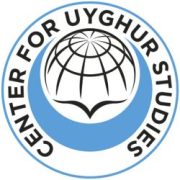Uyghur Figures – 02
Uyghur Figures – 02
Isa Yusuf Alptekin was born in 1901 in Yenihisar in Kashgar.. His father was Isa Qasim bin Muhammad Ali, and his mother was Aisha Hanim; both from the same district.
Alptekin first attended Chinese Language school, but then transferred to an Islamic school. During his years at the Chinese Language School, he assisted a revenue officer in collecting land tax.
In 1923, Alptekin learned the Uyghur language and worked as a foreign communications officer dealing with various problems with foreigners. He then traveled to Andjian and Tashkent, where he stayed for almost three years. During this period, he started to better understand the Russian regime in West Turkistan, and also met with East Turkistan nationalists, exploring ways to collaborate and co-exist. In the same year, Uzbek national poet Abdul Hamid Gulban met with him, expressing concern for a lack of people trained to be leaders and the need to send students to Turkiye and Germany to train them.
This became obvious when the independence movement initiated by Khoja Niyaz in 1931 showed Chinese leaders in East Turkistan that they must prevent the persecution of the people, or that such movements would spread and there would become a possibility of Soviet occupation of the region, potentially causing more serious problems in the future.
Isa Yusuf Alptekin went to Nanjing on June 2, 1932, and founded the “East Turkistan Civil Society” and also founded a journal titled “Voice of China and Turkistan”
On September 18, 1938, he was elected to the Chinese People’s Congress. Later that year, the government sent him to various Islamic countries to explain the state of conflict between Japan and China. He visited Lebanon, Iran, Afghanistan and Turkiye. During his visit, he met with many state leaders, politicians, writers, academics and East Turkistan immigrants.
On 21 September 1944, under the leadership of Ali Khan Ture, a revolt broke out in Ili against the Chinese invasion, and two months later on November 12th the “East Turkistan Republic” was established. Chinese President Yang Jiechi sought a peaceful way to stop the revolution, and allowed Massoud Sabri, Muhammed Emin Bugra, and Issa Youssef to go to Urumchi to meet with the leaders of the revolution. As a result of negotiations, on January 2nd 1946, a coalition government was formed.
In the same year, Isa Yusuf founded the East Turkistan branch of the Three Principles Youth Organization in Origami. He then founded the ‘Dar Altay’ and founded the newspaper ‘Ark’. He also organized weekly public meetings. He also became Secretary-General of the Massoud Sabri Baykozi government, which was established in 1947. His nationalist, anti-communist policies garnered attention from the Soviet Union and China.
On 21 October 1949, after long consideration, he and his friends decided to leave East Turkistan, feeling that their power would not stand up to the Communist Chinese army. On December 20th, he went to Ladakh and from there to Srinagar, the capital of Kashmir. In the meantime, he and Muhammed Emin Bugra tried to help the Kazakhs who wanted to go to India via Tibet.
He went to India, Saudi Arabia and Egypt in search of security and stability, and asked them for asylum, but with no luck. On January 6th, 1952, he arrived in Turkiye. Muhammed Emin Bugra also went to Turkiye. As a result of their visit to Turkiye and their efforts to explain their mission to people and through the media, they were granted immigration rights to Turkiye.
He moved his family to Turkiye in June 1954 and became a Turkish citizen on December 4th 1957. He traveled around the world to explain and visited many countries raising awareness about the Uyghur situation and his personal experience. During this time period, Alptekin attended several international conferences, including the Asian-African Conference, the Muslim World Association, and the World Islamic Conference, and met with national leaders around the world.
Following the death of Muhammed Emin Bugra on June 14th 1965, he became the head of the East Turkistan Immigrant Association, which was founded in 1960. In 1978, he was hospitalized after a car accident and then resigned from his main position. In 1984, he started publishing the journal “Voice of East Turkistan” in Turkish, Uyghur, Arabic and English.
Alptekin believed that diplomatic leadership was key to solving the situation in East Turkistan, and his path was different from that of other Turkistan leaders. He believed that the problems faced by East Turkistan should not be solved by force, but through understanding and long-term efforts.
His journey began at an early age, and his passion for freedom was alive until the last days of his life, nearing a century-long life. He is reported to have said that during the struggle, “As a Turkistani, you must work for the struggle of East Turkistan, as a Muslim you must work as a Muslim for the Islamic struggle, and as a human you must strive for a human cause.”
Isa Yusuf Alptekin has written several books, such as “East Turkistan Behind the Iron Curtain”, “East Turkistan Asks the World for Help”, “The East Turkistan Issue”, “The Forgotten Homeland – East Turkistan” and “East Turkistan is locked up.”
Isa Yusuf Alptekin passed away on December 17th 1995 in Istanbul.
Written by Omer Kul, translated to English by Center for Uyghur Studies
Copyright Center for Uyghur Studies - All Rights Reserved

